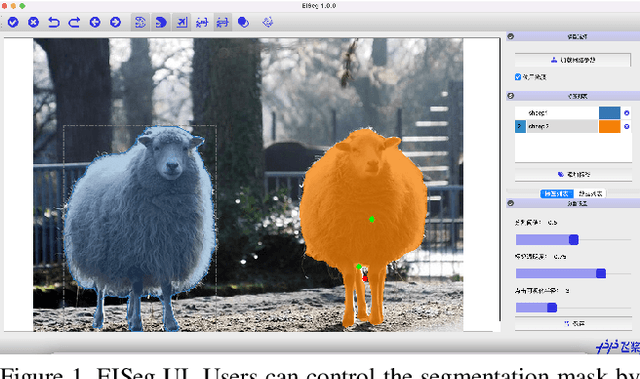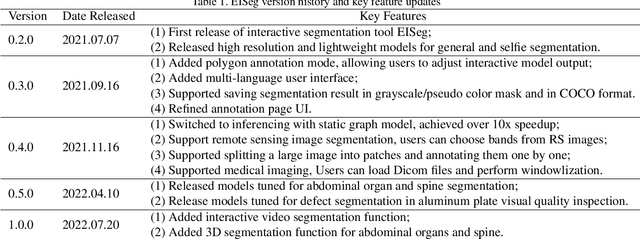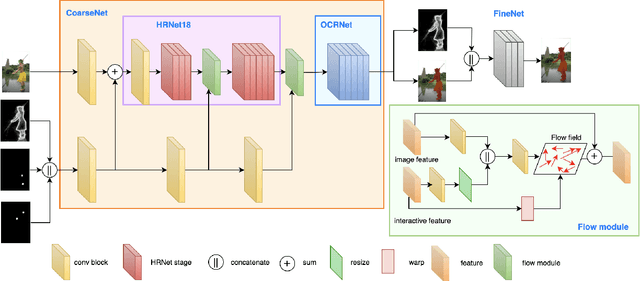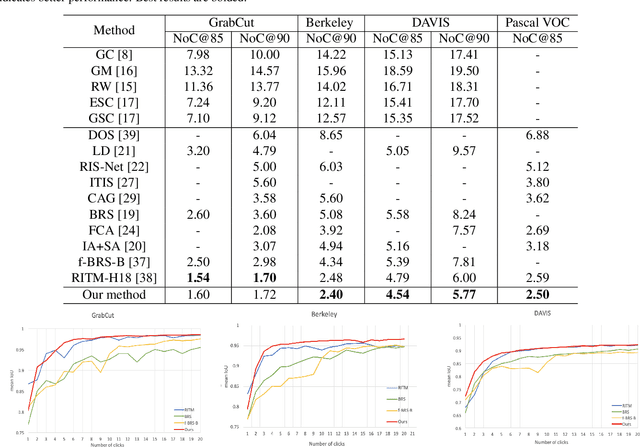Lin Han
The Multi-modality Cell Segmentation Challenge: Towards Universal Solutions
Aug 10, 2023Abstract:Cell segmentation is a critical step for quantitative single-cell analysis in microscopy images. Existing cell segmentation methods are often tailored to specific modalities or require manual interventions to specify hyperparameters in different experimental settings. Here, we present a multi-modality cell segmentation benchmark, comprising over 1500 labeled images derived from more than 50 diverse biological experiments. The top participants developed a Transformer-based deep-learning algorithm that not only exceeds existing methods, but can also be applied to diverse microscopy images across imaging platforms and tissue types without manual parameter adjustments. This benchmark and the improved algorithm offer promising avenues for more accurate and versatile cell analysis in microscopy imaging.
EISeg: An Efficient Interactive Segmentation Tool based on PaddlePaddle
Oct 18, 2022



Abstract:In recent years, the rapid development of deep learning has brought great advancements to image and video segmentation methods based on neural networks. However, to unleash the full potential of such models, large numbers of high-quality annotated images are necessary for model training. Currently, many widely used open-source image segmentation software relies heavily on manual annotation which is tedious and time-consuming. In this work, we introduce EISeg, an Efficient Interactive SEGmentation annotation tool that can drastically improve image segmentation annotation efficiency, generating highly accurate segmentation masks with only a few clicks. We also provide various domain-specific models for remote sensing, medical imaging, industrial quality inspections, human segmentation, and temporal aware models for video segmentation. The source code for our algorithm and user interface are available at: https://github.com/PaddlePaddle/PaddleSeg.
EdgeFlow: Achieving Practical Interactive Segmentation with Edge-Guided Flow
Sep 20, 2021



Abstract:High-quality training data play a key role in image segmentation tasks. Usually, pixel-level annotations are expensive, laborious and time-consuming for the large volume of training data. To reduce labelling cost and improve segmentation quality, interactive segmentation methods have been proposed, which provide the result with just a few clicks. However, their performance does not meet the requirements of practical segmentation tasks in terms of speed and accuracy. In this work, we propose EdgeFlow, a novel architecture that fully utilizes interactive information of user clicks with edge-guided flow. Our method achieves state-of-the-art performance without any post-processing or iterative optimization scheme. Comprehensive experiments on benchmarks also demonstrate the superiority of our method. In addition, with the proposed method, we develop an efficient interactive segmentation tool for practical data annotation tasks. The source code and tool is avaliable at https://github.com/PaddlePaddle/PaddleSeg.
 Add to Chrome
Add to Chrome Add to Firefox
Add to Firefox Add to Edge
Add to Edge